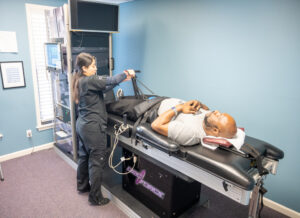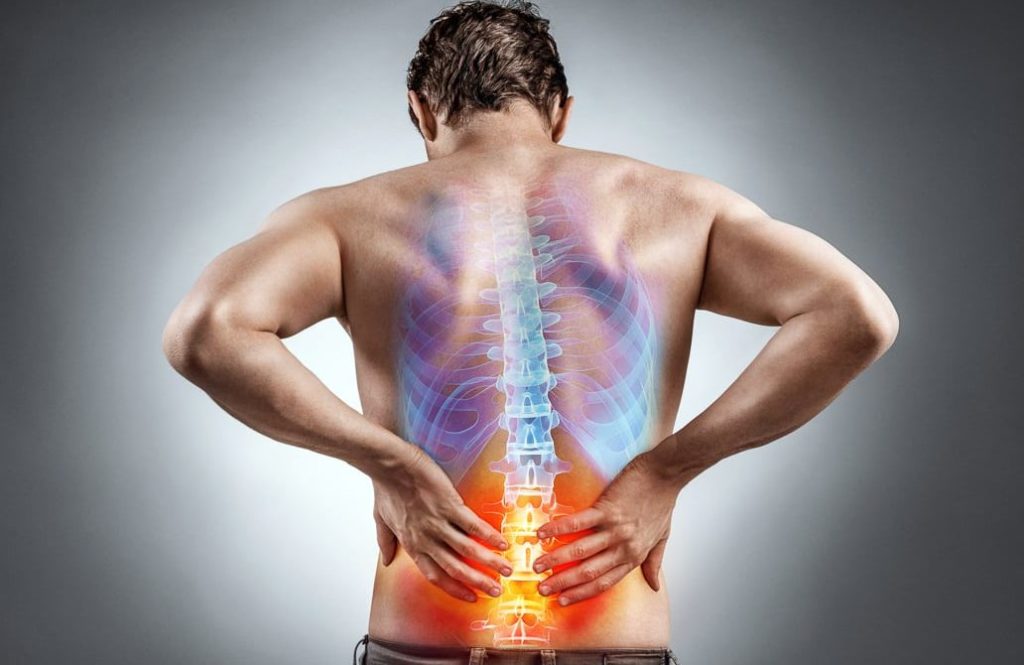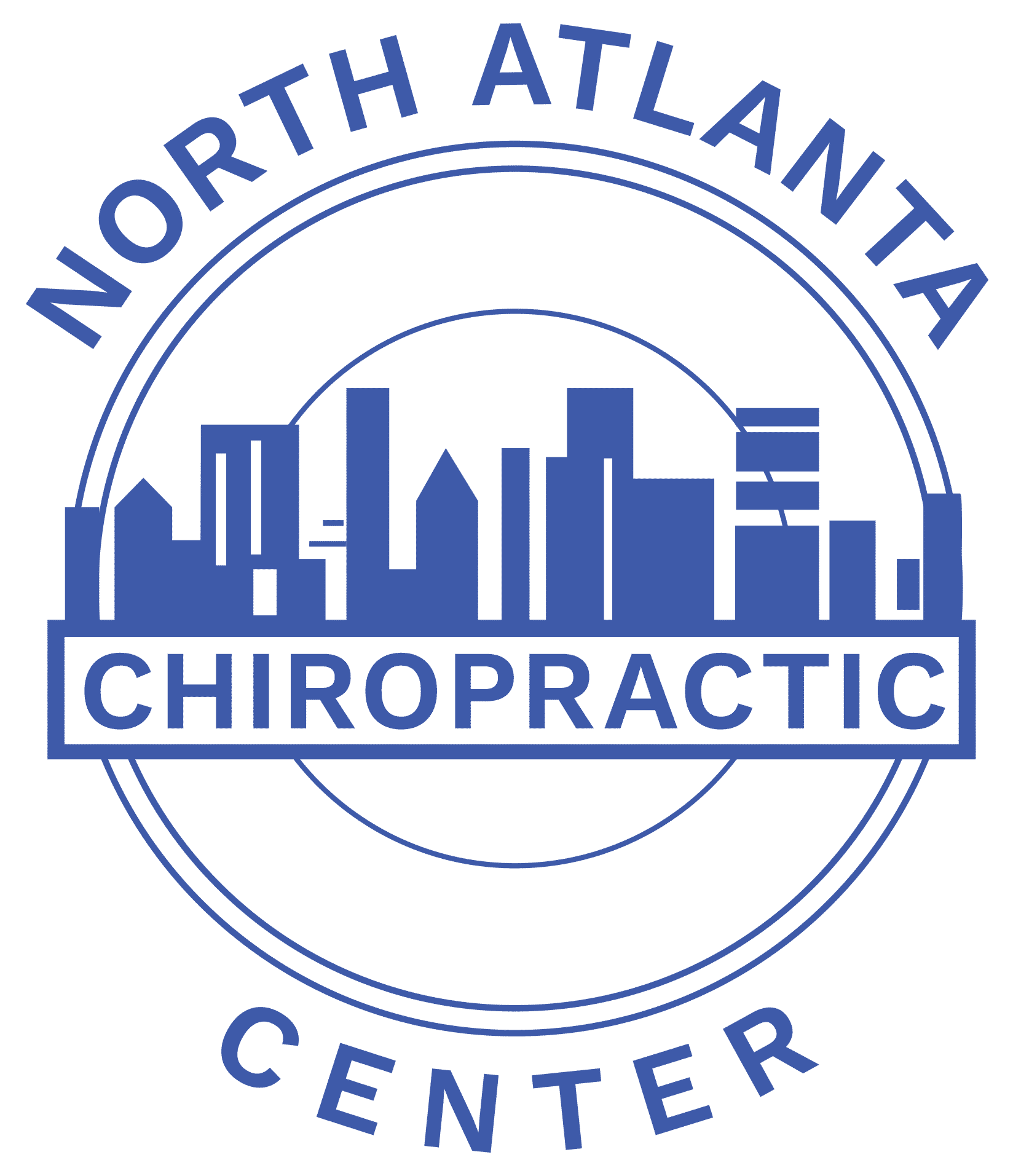
Spinal Decompression Therapy
Free Consultation with Doctor includes:
- 2 laser therapy sessions
- Complimentary MRI Review
- 2 spinal decompression
*Any further treatment shall be agreed upon in writing and signed by both parties
How Spinal Decompression Therapy Works
Spinal Decompression Therapy is a non-surgical treatment that gently stretches the spine to relieve chronic back pain. The therapy involves 24-minute sessions where you’re fully clothed and secured with harnesses. Treatment typically consists of multiple weekly sessions over six to eight weeks, aiming to relieve pain and promote healing in problem areas by decompressing the spine.
Here’s how it works:
A specialized device gently stretches your spine, using various traction patterns. This traction creates a negative pressure within the discs, which serves several purposes:
- It can target specific vertebrae in the lumbar or cervical spine.
- It promotes the flow of water, oxygen, and nutrients into the disc area, helping to rehydrate degenerated discs.
- The alternating pressure can help retract herniated disc material.
Spinal Decompression Therapy Can Help Alleviate…
Ever experience a sharp, pinching, tingling sensation quickly moving across your leg, or wake up in the middle of the night, frozen and suddenly unable to move because your back muscles won’t stop seizing?
Sciatica
Sciatica is a condition where the sciatic nerve, running from the lower back down the legs, is pinched or compressed, causing radiating pain through the lower body. This pain typically begins in the lower back and extends through the buttocks, hips, and legs, and is particularly common during pregnancy.
Spinal Stenosis
Spinal stenosis is the narrowing of spaces within the spine, which can be congenital or caused by conditions like osteoarthritis. This narrowing compresses the discs, potentially leading to pinched nerves, herniated discs, and other painful conditions as the vertebrae move closer together and displace vital fluids.
Herniated Discs
Herniated discs, also known as slipped, prolapsed, bulging, or ruptured discs, occur when the inner portion of a spinal disc protrudes through its outer shell due to injury or weakness. These are common consequences of spinal stenosis and degenerative disc disease, and often lead to pinched nerves.
Pinched Nerve
A pinched nerve occurs when spinal discs compress, reducing the space around a nerve and causing it to become squeezed. This compression leads to intense negative sensations that our body interprets as pain, often resulting in weakness, tingling, and sciatica-like symptoms.
Facet Syndrome
Facet syndrome, also known as lumbar facet syndrome, occurs when the facet joints in the spine become dysfunctional, leading to pain, soreness, stiffness, and inflammation. This condition often causes more severe pain in the morning that may improve with movement, and can be exacerbated by poor posture, especially for those who sit for long periods.
Schedule Your Consultation
Fill out the form below and someone from our staff will contact you to schedule an appointment. We offer no-obligation consultations and complimentary MRI Reviews

Non-Surgical Treatments for Back Pain Relief
Don’t let your chronic back pain rob you of the life you deserve to live! Spinal Decompression Therapy is an excellent way to diminish your pain and lead a normal life again.
Frequently Asked Questions:
What conditions can spinal decompression treat?
Spinal decompression therapy is used to treat conditions such as herniated discs, bulging discs, degenerative disc disease, sciatica, spinal stenosis, and facet syndrome. It can also be beneficial for patients with certain failed back surgeries.
Who is not a candidate for spinal decompression therapy?
Individuals with conditions such as pregnancy, metastasized cancer, spinal fusion, broken vertebrae, osteoporosis, spinal tumors, and certain post-surgical conditions with metal implants are generally not candidates for spinal decompression therapy.
What is the success rate of spinal decompression therapy?
The success rate can vary, but many sources report favorable outcomes. For example, around 80-85% of patients experience a long-term reduction in pain, with some studies indicating that up to 67% of patients with low back pain may achieve complete symptom relief.
How many treatments are typically required?
The number of treatments needed can vary based on the condition being treated. Generally, low back pain may require 24-30 visits, while cervical or neck conditions might need 20-24 visits. Treatments are often administered 3-4 times a week during the initial stages.
Are there any side effects or risks associated with spinal decompression therapy?
Spinal decompression therapy is considered safe and non-invasive, with most patients experiencing no side effects. However, some might experience mild muscle spasms or an achy feeling similar to starting a new exercise program. Emergency stop switches are available to ensure patient safety during treatment.
Is spinal decompression therapy covered by insurance?
Coverage for spinal decompression therapy can vary depending on the insurance provider and specific plan. It is advisable to check with your insurance company to determine if this therapy is covered under your plan.
